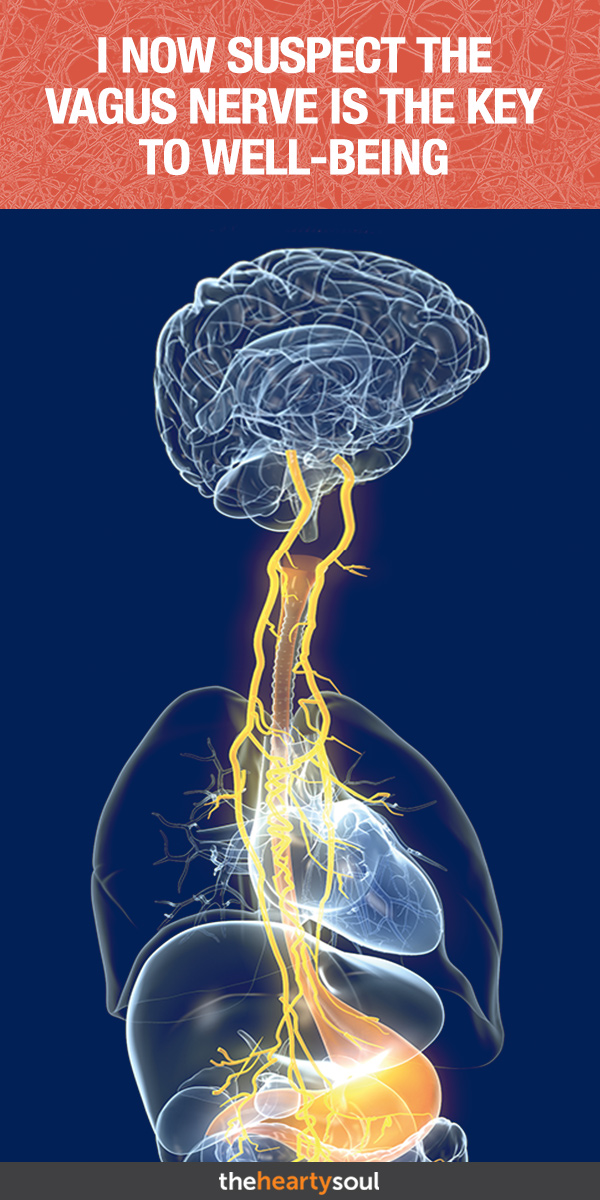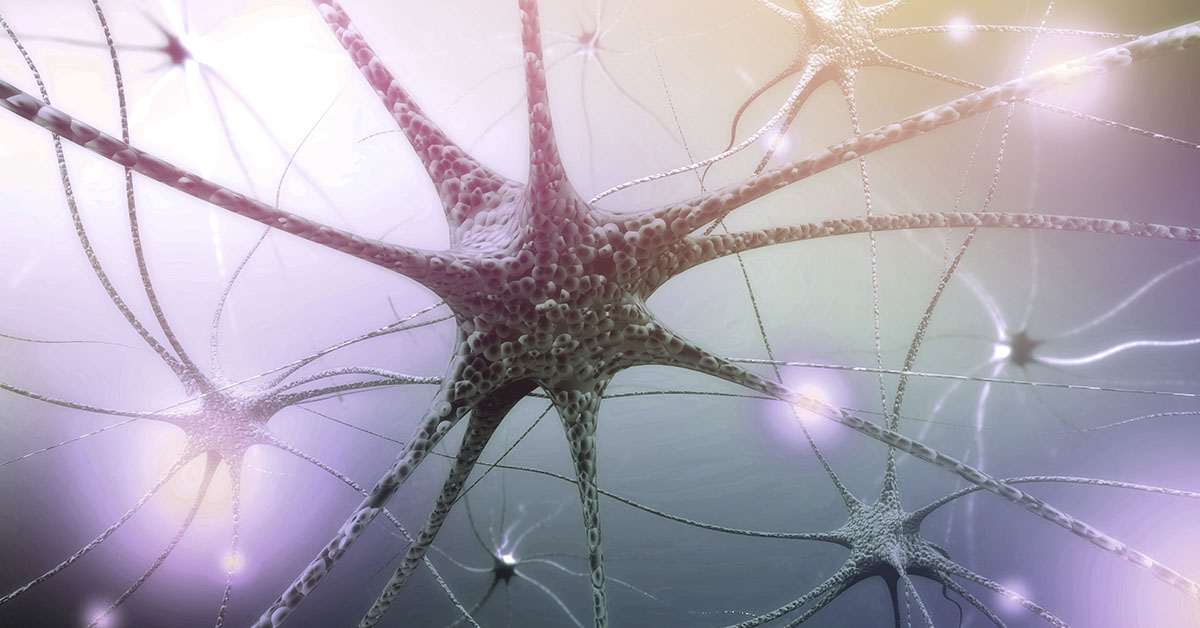Deep breathing has become synonymous with relaxation, and now there are scientific reasons why.
Yoga instructors guide their classes through breathing exercises, therapists instruct clients with anxiety to use it as a calming tool, even fitness instructors remind their clients to maximize their breathing in the hardest of workouts. These professionals say deep breathing can relax the mind and body, turning the automatic inhales and exhales into conscious actions.
Some people might dismiss breathing as a natural function and give it no more thought, but it has the power to change the way the body receives stress signals and your vagus nerve has a lot to do with it.
What is the Vagus Nerve?
Nerves play a vital function in the human body. The vagus nerve is one of the 12 cranial nerves that link the brain to the rest of the body. It is also the longest cranial nerve, running from the brain stem to the colon.
Some nerves have sensory functions which send information about sights, tastes, sounds, and smells to the brain. Others have what’s called motor functions, which control the movement of muscles and certain glands. [1]
Some cranial nerves have both sensory and motor functions, and the vagus nerve is one of them.
The vagus nerve’s sensory functions include supplying sensations for:
- Areas of the ear and throat,
- Larynx,
- Esophagus,
- Lungs,
- Trachea,
- Heart,
- Parts of the digestive tract,
- It also plays a small role in taste.
Its motor functions include stimulating certain muscles of the body, namely:
- Pharynx
- Larynx
- Soft palate
- Heart (it helps to lower one’s resting heart rate)
- Digestive tract [2] [3] [4] [5]
Note that many of these body parts, like the throat and the digestive system, are often impacted by symptoms of stress.
The Vagus Nerve: The Key to Relaxation
The act of deep breathing stimulates the vagus nerve and helps to relax the body. Since this nerve is in charge of the ‘flight or fight’ reflex, stimulating it reduces heart rate and blood pressure. This effectively slows or stops the body’s stress response.
This is essentially what makes a person feel relaxed. As we breathe, the vagus nerve pays attention and sends the brain signals to relax. This type of breathing is often referred to as diaphragmic or slow abdominal breathing [14].
Why does breathing need to be slow? Rapid, shallow breaths cause the brain and heart to receive stress signals and raise cortisol and adrenaline levels. Slow, deep breaths would indicate a time of calm and peace, and the body lower stress levels and allow the body to rest. [6]
The connection between our brain and body is strong. Think about the phrase “trust your gut,” it is thought to refer to the vagus nerve, which serves as a connection between our gut & body, and our brain. Think of this ‘gut brain axis’ as a mediator between thinking and feeling.
How to Breath to Activate the Vagus Nerve
“Vagal activity is highest, and heart rate lowest, when you’re exhaling,” says Lucy Norcliffe-Kaufmann associate professor of neurology at NYU-Langone.
It’s a little counter-intuitive that exhaling triggers the calming response. Usually when one is instructed to ‘take deep breaths,’ the focus is fixated on a steady inhale. However, to create calmness, just as much concentration should be spent on finishing that breath.
Researchers have found a clear and simple breathing method to induce relaxation: inhale for five seconds then exhale for five seconds. This equals about six breaths a minute. Notice how the body feels before and after trying this exercise. [7]
Read: 10 Morning Habits We Should Say Goodbye to Once and For All
How to Measure Your Vagal Tone
After understanding the vitality of the vagus nerve, it leads one to wonder if there was a way to measure the quality of one’s vagus nerve. After all, if this nerve is the key to relaxation, everyone would want to ensure theirs is healthy and strong. This measure of health related to the nerve is known as, vagal tone.
One’s vagal tone can depend on their level of activity. For example, athletes naturally have a higher vagal tone, as opposed to someone bedridden or astronauts in zero-gravity space.
A simple way to test vagal tone is by timing how quickly the heart rate slows after working out. The easier it is to recover one’s breath after intense movement, the better the vagal tone. This recovery rate, of course, can always be improved with regular exercise.
There is technology available to test vagal tones, but Norcliffe-Kaufmann says their results may be unreliable. “It’s more important to focus on breathing and feeling calm and balanced, rather than on a number.”
How to Stimulate the Vagus Nerve—Besides Breathing
Other ways to activate the vagus nerve include:
There are also treatments available for sufferers of epilepsy and depression that use manual and sometimes electric nerve stimulation. These can be offered when medication doesn’t help regulate the patient. Talk to your doctor if these treatments might benefit you. [8]
Using Breath in Everyday Life
The sad truth is many of us would prefer to spend money on expensive devices or pills to induce relaxation. Breathing is boring and sometimes mentally challenging, especially in the heat of a stressful situation.
However, deep, slow breaths can be practiced at any moment of the day, like in the shower, in a waiting room, in bed, or in traffic. Some moments will be more stressful than others, but as one practices this tool, it can become second nature, and easy to access in times of panic.
A tool of relaxation ready whenever people need it—no matter where they are—is a powerful gift that no money can buy.
Read: What is Candida Overgrowth, and Do You Have It?

Keep Reading: 10 Alternative Flours You Should Know
Sources
- Overview of the Cranial Nerves https://www.merckmanuals.com/home/brain,-spinal-cord,-and-nerve-disorders/cranial-nerve-disorders/overview-of-the-cranial-nerves
- Vagus Nerve Overview https://www.healthline.com/human-body-maps/vagus-nerve#testing
- Vagal regulation of acid secretion and gastrin release. https://www.ncbi.nlm.nih.gov/pmc/articles/PMC2588919/
- The Vagus Nerve https://teachmeanatomy.info/head/cranial-nerves/vagus-nerve-cn-x/
- Ease anxiety and stress: Take a (belly) breather https://www.health.harvard.edu/blog/ease-anxiety-and-stress-take-a-belly-breather-2019042616521
- Effect of rosary prayer and yoga mantras on autonomic cardiovascular rhythms: comparative study https://www.ncbi.nlm.nih.gov/pmc/articles/PMC61046/
- Hearing laughter improves the recovery process of the autonomic nervous system after a stress-loading task: a randomized controlled trial. https://www.ncbi.nlm.nih.gov/pubmed/30598694
- Depression and Anxiety Disorders: Benefits of Exercise, Yoga, and Meditation. https://www.ncbi.nlm.nih.gov/pubmed/31083878
- Patient Satisfaction and Benefits of Music Therapy Services to Manage Stress and Pain in the Hospital Emergency Department. https://www.ncbi.nlm.nih.gov/pubmed/30882144
- An Observational Study on Acupuncture for Earthquake-Related Post-Traumatic Stress Disorder https://www.ncbi.nlm.nih.gov/pubmed/31031878
- Evaluation of Cognitive Performance and Neurophysiological Function during Repeated Immersion in Cold Water. https://www.ncbi.nlm.nih.gov/pubmed/31047884
- Vagus nerve stimulation https://www.mayoclinic.org/tests-procedures/vagus-nerve-stimulation/about/pac-20384565
- Diaphragmatic Breathing Exercises and Your Vagus Nerve https://www.psychologytoday.com/ca/blog/the-athletes-way/201705/diaphragmatic-breathing-exercises-and-your-vagus-nerve
- Featured Image Credit: Wellcome Collection

